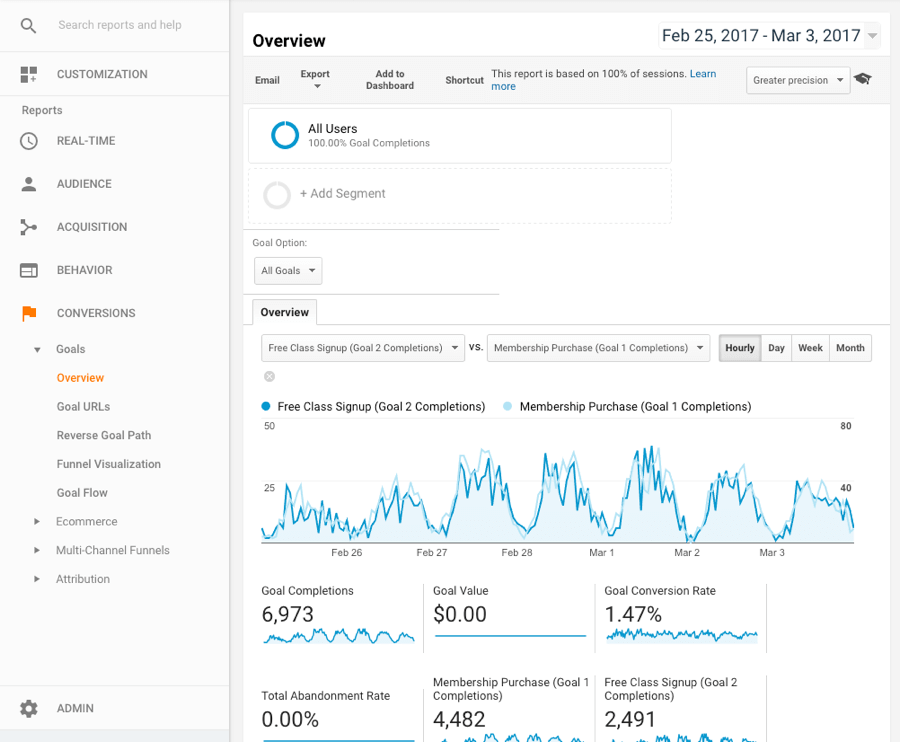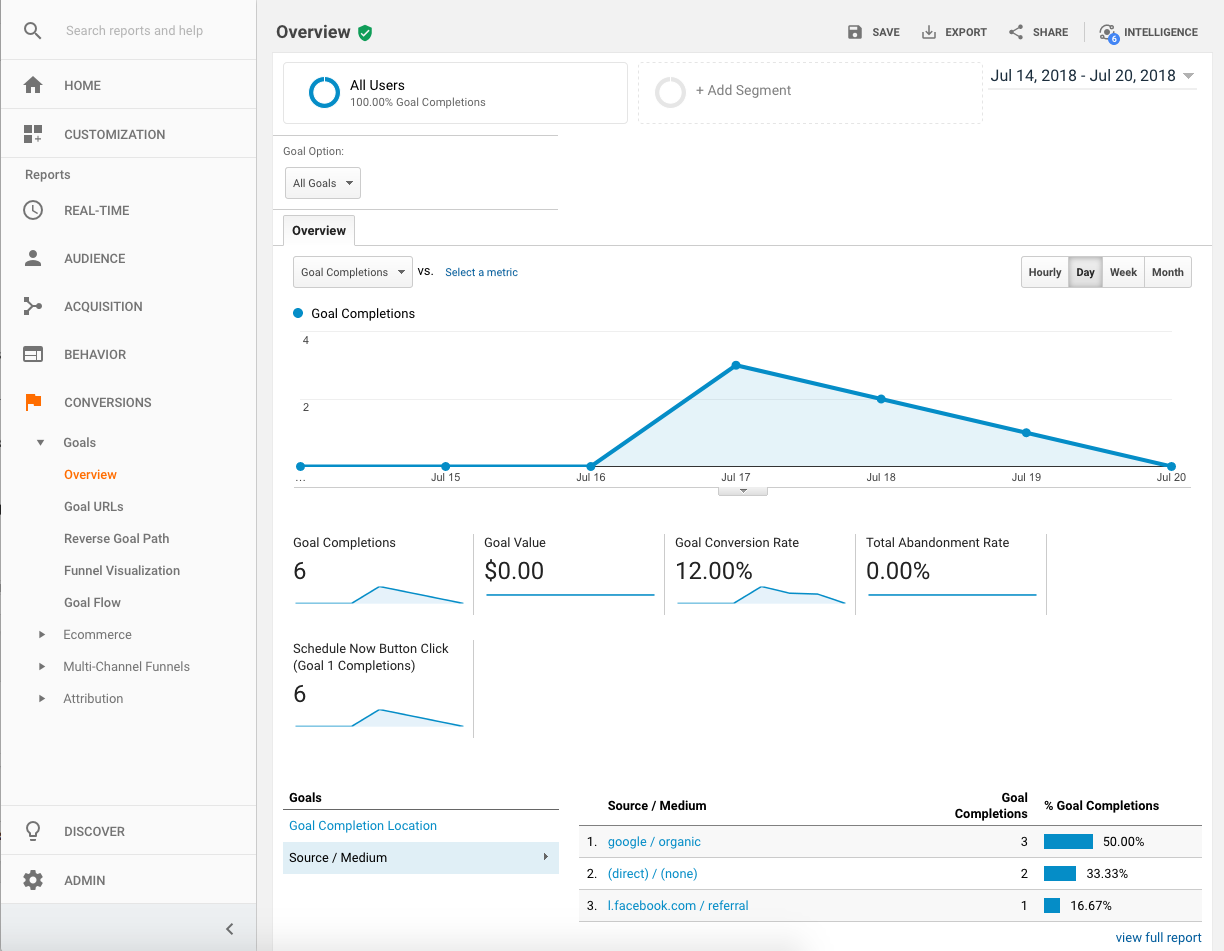What Data Is Google Analytics Goals Unable to Track and Why
What Data Is Google Analytics Goals Unable to Track and Why
Blog Article
Discover the Limitations of Google Analytics Goals: Revealing the Information Kind That Remain Untrackable
As organizations increasingly count on data-driven decision-making, recognizing the limitations of devices like Google Analytics ends up being extremely important. While Google Analytics Goals offer important insights into customer interactions, there exist information kinds that avoid tracking, posing difficulties to an extensive understanding of customer behavior. These untrackable data kinds question concerning the precision and completeness of the analytics data that organizations greatly trust for their digital approaches. Curious to reveal the hidden dead spots in your data analysis procedure?
Incomplete Customer Journey Tracking
Insufficient individual journey tracking within Google Analytics can hinder the ability to properly analyze customer actions. When the user trip is not totally tracked, there are voids in the data that stop a thorough understanding of exactly how individuals engage with a website. This lack of understanding can bring about missed out on possibilities for optimization and enhancements to the customer experience.
One typical problem with incomplete user journey monitoring is the inability to see the full path that customers take before completing a goal or leaving the website. Without this information, it is testing to identify where customers might be coming across barriers or rubbing points that prevent them from transforming. Furthermore, incomplete tracking can cover the influence of particular advertising initiatives or site adjustments on individual habits.
To resolve this limitation, it is important to establish correct monitoring devices within Google Analytics to catch the entire individual trip. This might involve establishing occasion tracking, goal funnels, or making use of devices like Google Tag Manager to make certain that no important communications go unrecorded. By getting a detailed view of the user trip, web site owners can make even more informed decisions to boost customer involvement and drive conversions.
Acknowledgment Challenges
Browsing via acknowledgment challenges in Google Analytics requires a thorough understanding of exactly how various touchpoints add to the overall conversion process. Attribution obstacles arise from the intricacy of modern-day consumer journeys, where individuals interact with multiple channels before converting.
One typical attribution difficulty is the trouble in attributing conversions to the right resource, specifically in cases where individuals interact with multiple networks before converting. This can result in errors in determining which marketing efforts are driving one of the most conversions. In addition, cross-device tracking positions one more attribution challenge, as customers frequently change between tools throughout their journey, making it challenging to track their interactions seamlessly. Marketing professionals need to meticulously interpret and analyze attribution data to make enlightened choices and enhance their advertising and marketing approaches properly.
Offline Conversions
Given the obstacles related to connecting conversions accurately in online networks, the measurement of offline conversions offers a considerable opportunity for online marketers looking for a more thorough understanding of their customers' journey. Offline conversions refer to activities that customers absorb the real world, such as making purchases in brick-and-mortar stores or over the phone, going to occasions, or engaging with printed products - what data is google analytics goals unable to track. These conversions are essential for organizations that operate both online and offline, as they supply valuable insights right into the efficiency of marketing projects throughout numerous touchpoints
Tracking offline conversions find traditionally posed a significant obstacle for marketers, as it was testing to attach these activities back to details on the internet interactions precisely. Nonetheless, with innovations in innovation, such as the integration of CRM systems, special identifiers, and coupon codes, services can now connect the void in between online and offline information to acquire an extra holistic sight of consumer behavior. By efficiently measuring offline conversions, marketing experts can optimize their techniques, assign resources more effectively, and eventually improve the general client experience.
Cross-Device Tracking
Cross-device tracking plays an essential duty in comprehending the interconnected nature of customers' digital communications throughout numerous tools. In today's omnichannel globe, where individuals flawlessly switch over in between smart devices, tablets, and desktop computers, tracking their habits throughout these gadgets is vital for marketing professionals to gain a detailed view of their client trip.

Furthermore, personal privacy worries and laws such as GDPR and CCPA have better complex cross-device monitoring. With users demanding even more control over their information and enhanced limitations on tracking innovations, marketing experts must locate cutting-edge and privacy-compliant methods to connect customer interactions throughout tools.
Dynamic Content Engagement
Comprehending individual engagement with dynamic material is essential in maximizing electronic advertising methods for improved audience interaction. Dynamic content refers my latest blog post to site elements that change based upon individual behavior, choices, or various other variables, providing an individualized experience. Nonetheless, tracking individual interactions with vibrant web content presents difficulties for traditional analytics devices like Google Analytics.
While Google Analytics can track basic communications like clicks and page sights, it may battle to record even more nuanced engagements within vibrant material. what data is google analytics goals unable to track. Metrics such as time spent on details dynamic elements, float activities, or interactions within pop-ups are commonly not quickly measurable using standard monitoring approaches. This restriction impedes marketing professionals' capability to totally realize how users are involving with vibrant material and customize their techniques as necessary

Verdict
Finally, Google Analytics goals have restrictions in tracking incomplete individual trips, attributing conversions properly, catching offline conversions, tracking cross-device communications, and measuring dynamic material interaction. These restrictions highlight the relevance of exploring extra monitoring techniques and devices to gain an extra detailed understanding of customer behavior and conversions past what Google Analytics can give.
While Google Analytics Goals deal useful insights into individual interactions, there exist data kinds that thwart monitoring, presenting difficulties to a thorough understanding of user habits.Incomplete customer trip monitoring within Google Analytics can impede the capability to precisely examine individual actions. When the individual journey is not fully tracked, there are gaps in the information that protect against a detailed understanding of exactly how users communicate with an internet site.One usual issue with insufficient customer journey tracking is the lack of ability to see the complete path try this site that customers take in the past completing a goal or leaving the site. By acquiring a detailed view of the individual journey, site owners can make more informed choices to boost individual engagement and drive conversions.
Report this page